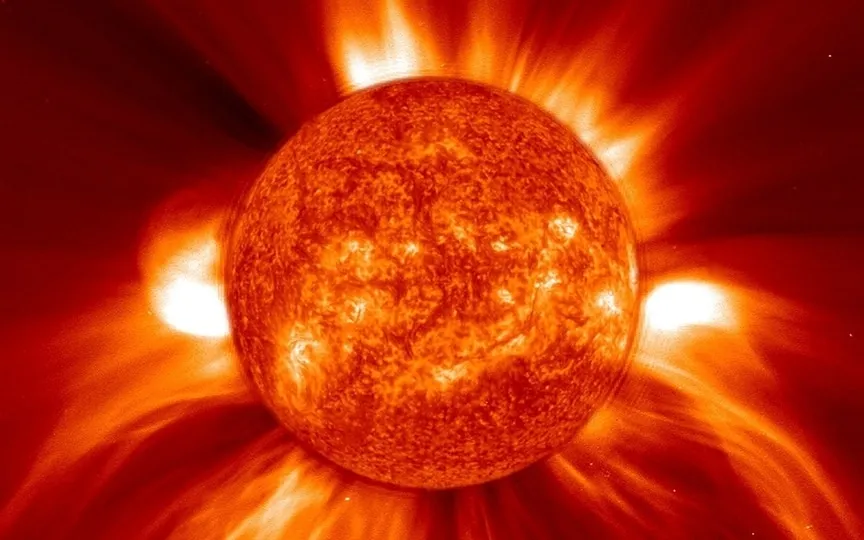NASA reveals that a growing sunspot could potentially trigger a solar storm today, posing a risk from solar flares.
Solar activity has been increasing dangerously in recent months, resulting in various solar events affecting Earth. Within the past month, two alarming X-class solar flares struck the planet, with one causing a radio blackout in the polar regions lasting nearly three days. The Sun has been displaying its full power for the past couple of months, and as we approach the anticipated solar maximum in 2024-25, its intensity is expected to escalate further. NASA has recently disclosed the emergence of a growing sunspot that has the potential to emit a solar flare and initiate a solar storm. Further information can be found regarding this matter.
Solar storm today
According to the National Oceanic Atmospheric Administration (NOAA), up to 11 sunspots have been observed on the surface of the Sun. All these sunspots crackle from tiny C-class solar flares. However, sunspot AR3546 has been found to be the most unstable and poses the greatest threat to a major solar flare.
The SpaceWeather report states: “There are 11 sunspot groups in the solar disk, and almost all of them are crackling with small C-class solar flares. The fast-growing sunspot AR3546 appears to be the least stable and thus the biggest threat to a more significant flare.
The solar flare was discovered using NASA’s Solar Dynamics Observatory. If it strikes, a solar storm could soon be upon us.
About the NASA Solar Dynamics Observatory
The NASA Solar Dynamics Observatory (SDO) uses three very important instruments to gather information about various solar activities. They include the Helioseismic and Magnetic Imager (HMI), which measures high-resolution longitudinal and vector magnetic fields across the entire visible solar disk, the Extreme Ultraviolet Variability Experiment (EVE), which measures the Sun’s extreme ultraviolet radiation, and the Atmospheric Imaging Assembly (AIA), which provides continuous disk-wide observations of the Sun of the chromosphere and corona in seven extreme ultraviolet (EUV) channels.
Also read these top stories today:
Did Google infringe on AI patents? Google was accused of infringing patents and using the technology to power AI features in Google Search, Gmail and Google Translate. This article has some interesting details. Check it out here.
“Artificial intelligence will not only help improve Microsoft Office.” Microsoft says artificial intelligence will help scientists speed up the painstaking work needed to discover new chemical compounds and materials. Dive in and see what it just did here.
Invisible TV! LG says the TV is “virtually invisible when turned off,” eliminating the ugly big black screen that can ruin a room’s Feng shui.
See the future of television here.




